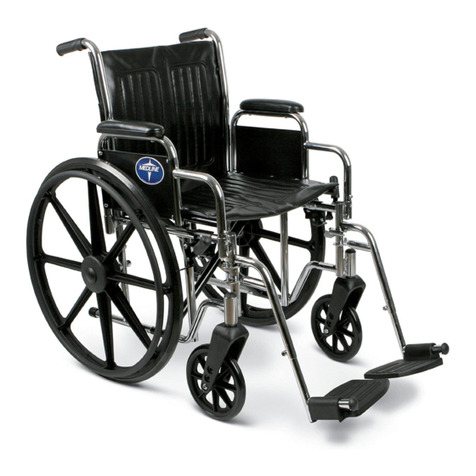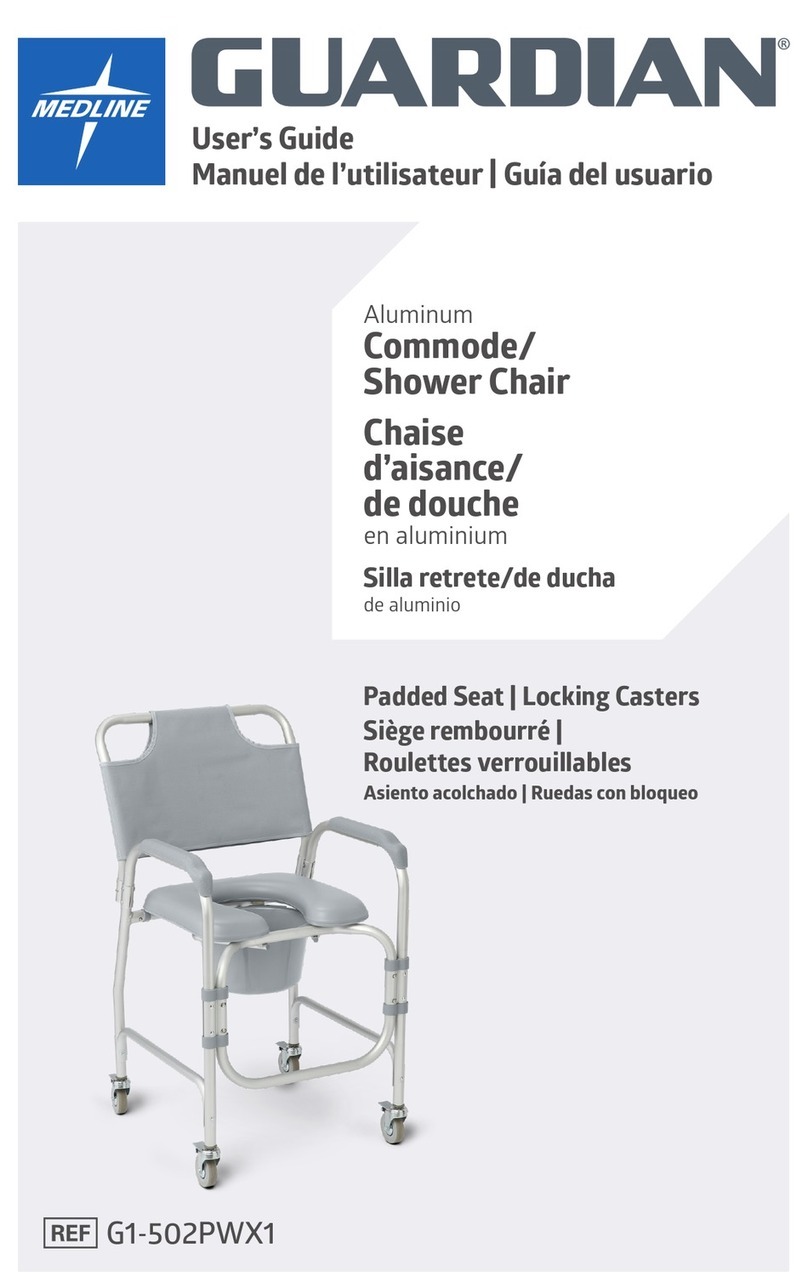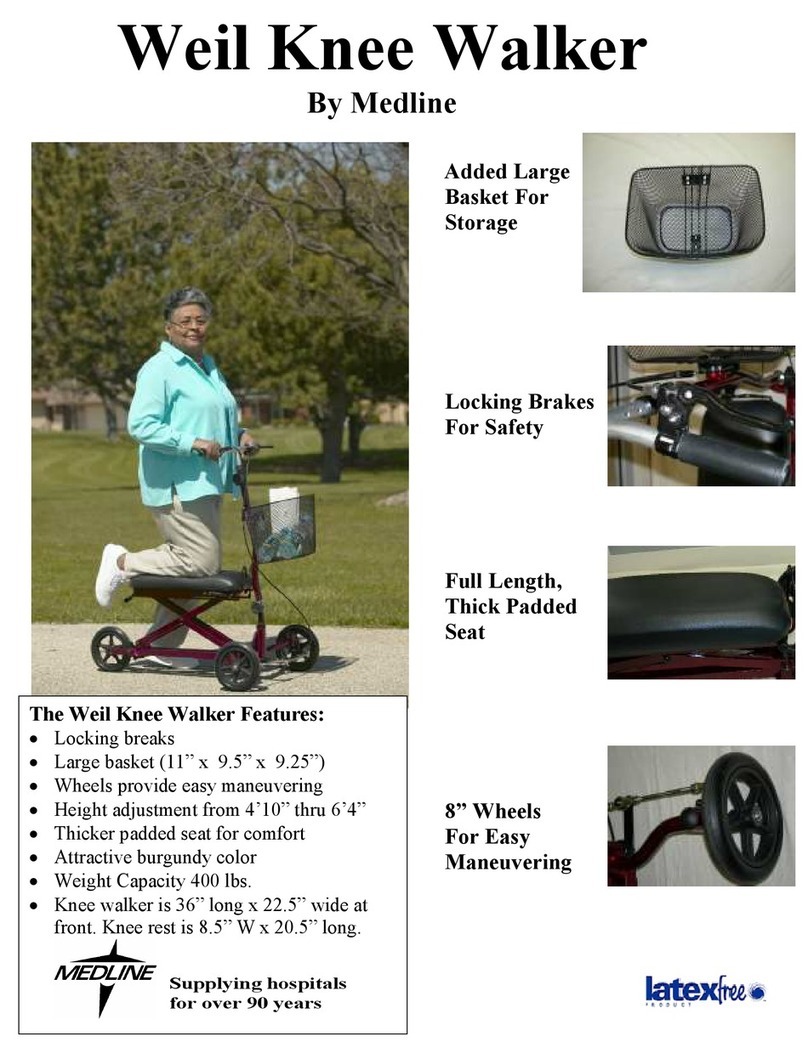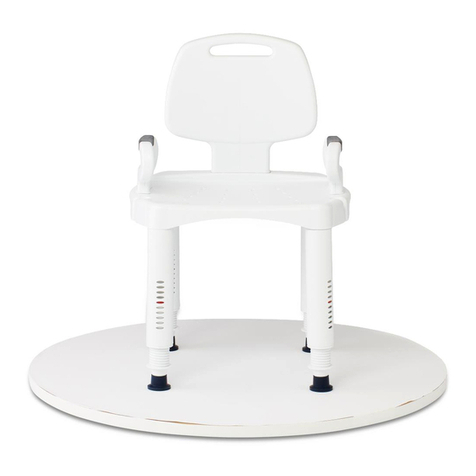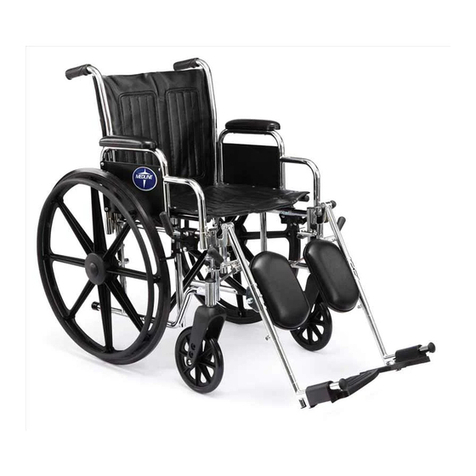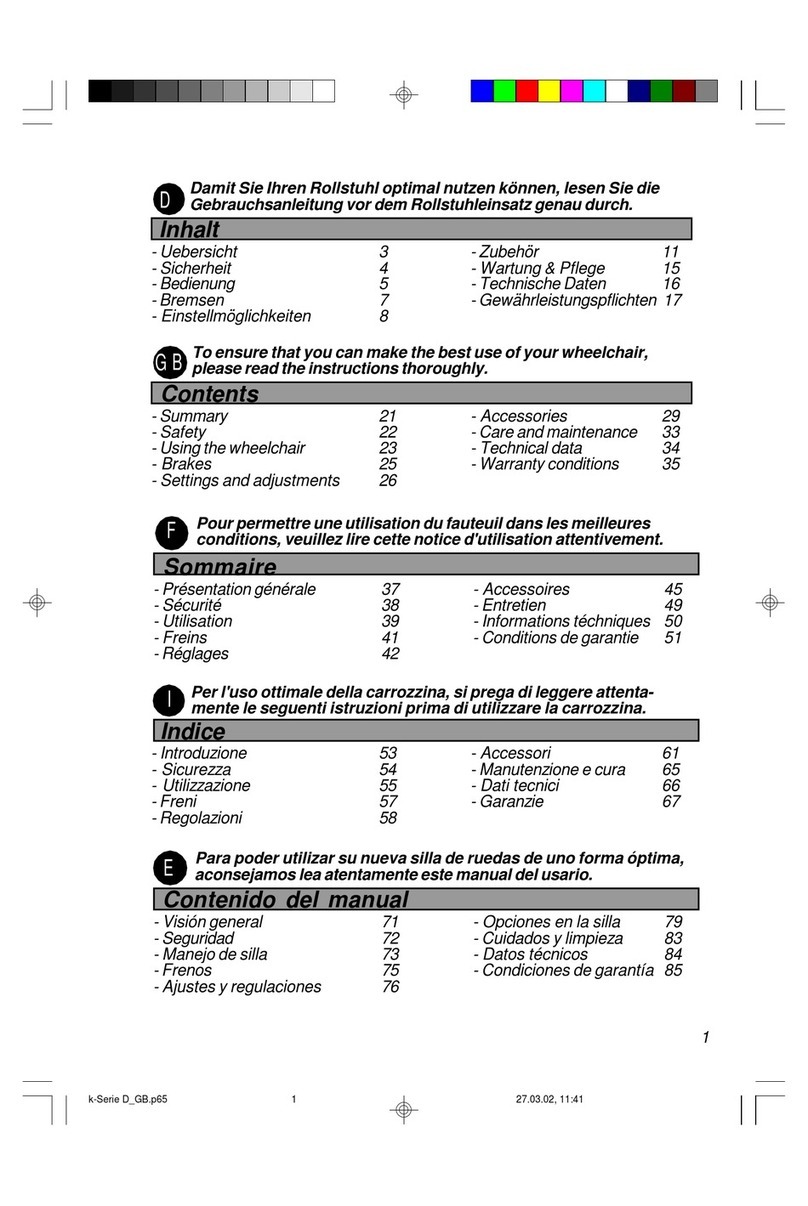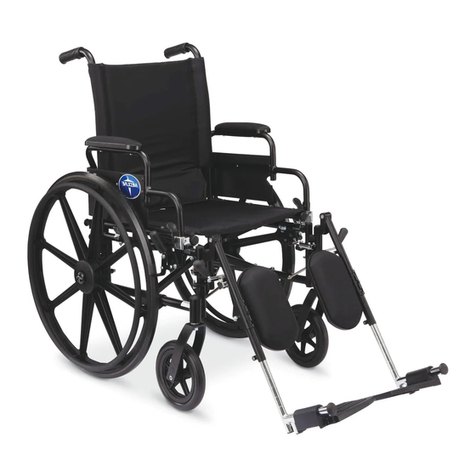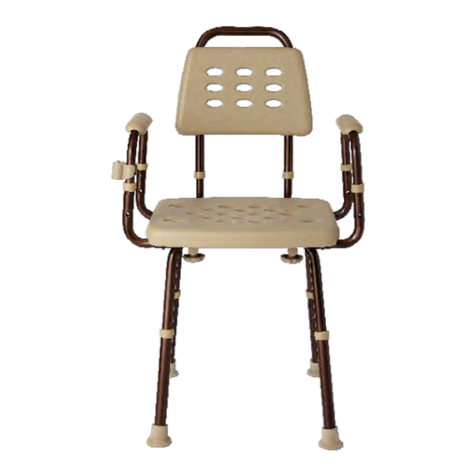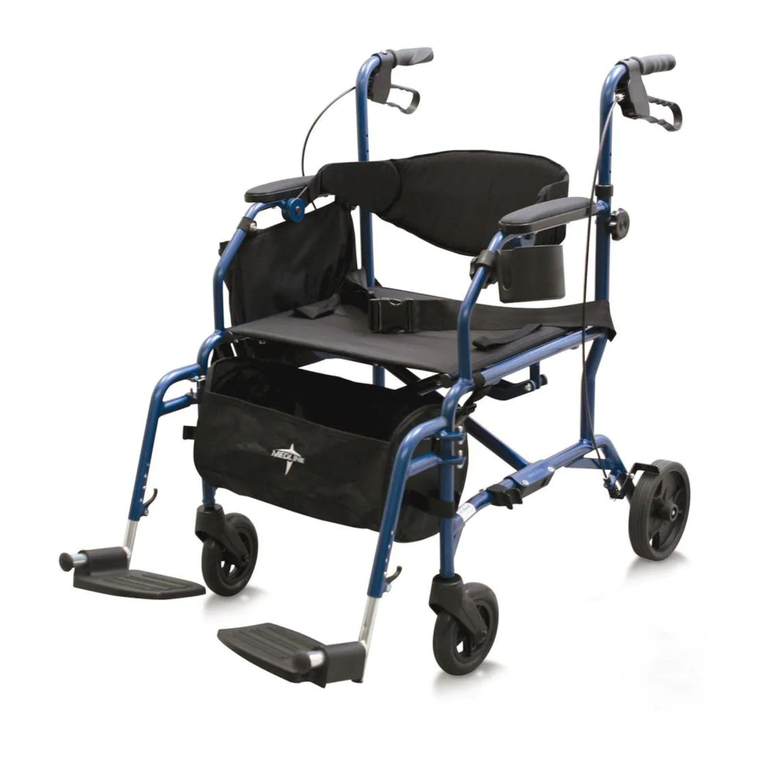
4MEDLINE K1 Guardian| K2 Guardian | K3 Guardian | Guardian Recliner | PIC-00270 (Rev: 02-23-21) 1-800-MEDLINE (633-5463) |medline.com 5
Table of contents
General warnings.......................................................................................................... 2
Medline limited warranty ............................................................................................ 3
Table of contents .......................................................................................................... 4
Warnings and safety instructions............................................................................... 5
Guidelines: safety and handling of wheelchairs ........................................................ 6-8
General use instructions
Anti-tippers .................................................................................................................. 9
Opening/closing the wheelchair ................................................................................. 10
Wheel locks................................................................................................................... 10
Adjusting seat height................................................................................................... 11
Adjusting leg or footrest height.................................................................................. 11
Installing or removing leg and footrest riggings....................................................... 12
Elevating legrest operation......................................................................................... 12
Recliner operation........................................................................................................ 13
Safety inspection and maintenance............................................................................ 14
Safety inspection checklist.......................................................................................... 15
Warnings & safety instructions
General information
DO NOT use the wheelchair in a vehicle for transport. This wheelchair has not been approved as a seat surface to be used within a vehicle of any
kind. Always transfer the wheelchair user to an approved vehicle seat and use restraints available from the auto industry for this application.
DO NOT exceed the weight capacity 300 lbs (136 kg). The weight capacity includes the weight of the rider plus items carried or attached to the
wheelchair.
DO NOT use the wheelchair while weight training. Medline wheelchairs have not been tested for any type of weight training. If the chair is used
during weight training, Medline will not be held liable. If the weight capacity is exceeded, risk of fall, tip-over or loss of control may occur which
can result in bodily injury or product damage.
Use of the seat belt is recommended to maximize safety and stability.
A qualified wheelchair technician must perform any repair or change to this wheelchair or serious injury may occur. Technicians: do not service
the wheelchair without first reading and understanding this owner’s manual. If you are unable to understand the warnings, cautions, or
instructions; contact Medline at 1-800-MEDLINE.
Environmental
The wheelchair is designed for use on firm, even surfaces such as concrete, asphalt, and indoor floors and carpeting.
DO NOT operate the wheelchair on loose, slippery, or uneven surfaces such as sand, gravel, hills, dirt roads, or ice.
DO NOT operate the wheelchair on inclines greater than 10% (6 degrees) without assistance.
DO NOT attempt to go up or down inclines that are covered with oil, water, ice or any other potentially slippery substance.
DO NOT attempt to ride over curbs or obstacles. Doing so may cause your wheelchair to tip over and cause bodily harm to you
or damage to the wheelchair.
DO NOT use the wheelchair on stairs or escalators.
General use
DO NOT stand on the frame of the wheelchair.
DO NOT stand or put pressure on the footrests. When getting in or out of the wheelchair, make sure the footplates are in the up position.
DO NOT attempt to lift the wheelchair by armrests or any detachable components.
There are potential finger pinch point areas at moving parts and between the seat frame and the seat cradles on some models.
When opening the wheelchair, take care not to place your hand or fingers between the seat frame and the seat cradles (if present) or on
any other moving parts.
ALWAYS keep hands and fingers away from moving parts. DO NOT sit in the wheelchair until the seat is completely in the open position.
Risk of injury may occur if care is not taken.
The wheelchair should be on a stable, level surface with the wheel locks engaged before transferring the user to or from the wheelchair.
Completely engage the wheel locks when entering and leaving the wheelchair or using the wheelchair in an elevator or a wheelchair lift.
DO NOT transfer in or out of the wheelchair on your own unless you have sufficient upper body strength, balance and agility and have been
instructed in transfer techniques by a health professional. Every precaution should be taken to reduce the gap distance between the wheelchair
and the target seat or bed. Turn both casters parallel to the object you are transferring to.
DO NOT use the wheel locks to stop the wheelchair from moving. Wheel locks are not brakes. DO NOT use the wheel locks to slow your descent
down an incline.
Changing direction when going down an incline could cause instability.
DO NOT lean forward out of the wheelchair any farther than the length of the armrests.
DO NOT attempt to reach for objects if doing so means you must move forward in the seat.
DO NOT attempt to reach objects if you have to pick them up from the floor by reaching down between your knees.
DO NOT shift your weight or sitting position toward the direction you are reaching as the wheelchair may tip over.
DO NOT attempt to lean over the top of the back upholstery to reach objects.
Before leaning or reaching forward, make sure to rotate the casters straight ahead toward the front of the wheelchair and engage the wheel
locks to prevent the wheelchair from tipping over or moving.
DO NOT tip the wheelchair without assistance. DO NOT lean the wheelchair back since this can cause the wheelchair to tip over. If trying to reach
objects, reach back only as far as your arm will extend without altering your seating position.
Any person assisting the rider in maneuvering or lifting of the wheelchair must have sufficient strength and be able to see obstacles in the path
of travel. When learning a new assistance technique, have an experienced assistant help you before attempting it alone. Remember to use good
body mechanics.
Contact with water or excess moisture may cause the non-aluminum wheelchairs to rust or corrode. DO NOT use the chair in a shower, pool
or other body of water. Avoid excess moisture (example: do not leave the chair in a damp bathroom while taking a shower). Dry the chair
immediately if exposed to moisture.
When cleaning the hand grips, use only a clean towel lightly dampened with cool water. Ensure the hand grips are dry before use. Use of soap or
ammonia based cleaning solutions may result in the hand grips sliding off.
If the wheelchair is exposed to extreme temperatures, high humidity and/or becomes wet, check the hand grips to ensure they are not loose and
do not twist on the handle.
Avoid storing or using the wheelchair near open flames or combustible smoldering products.
